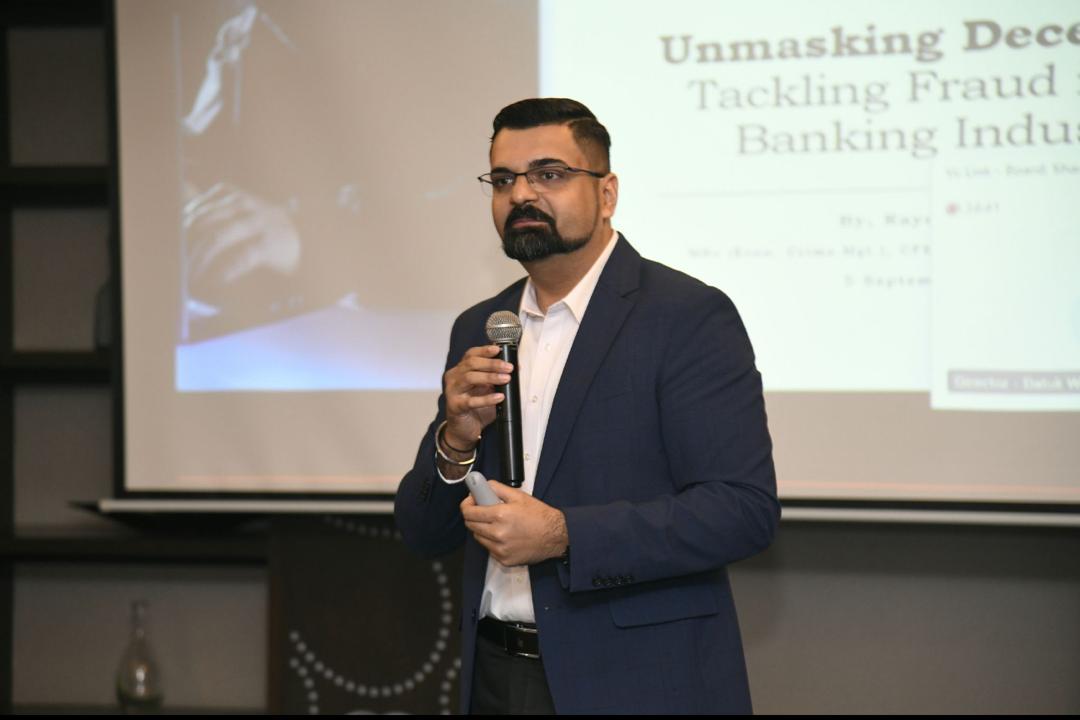By Iva Karen

KUALA LUMPUR, June 12: There is no minimum threshold for filing a Suspicious Transaction Report (STR), as reasonable suspicion alone is enough, says a financial forensics expert.
Raymon Ram, who has been fighting financial crimes over the years, said banks don’t wait for transactions to cross large amounts before acting, and small transfers can be flagged if something doesn’t look right.
Raymon, a certified anti-money laundering specialist, explained that banks use smart systems to monitor transactions in real time. These systems are designed to spot unusual patterns, like money moving too quickly, being sent from strange locations, or being handled in ways that don’t match a customer’s usual behaviour.
“Once a red flag is raised, the bank’s compliance team will look into it more closely. One common warning sign is something called structuring. This is when someone breaks up a large sum of money into smaller transfers to avoid triggering alerts.
“If these smaller transactions are done back-to-back or across multiple accounts, the system catches on and raises an alert,” he said.
Raymon added that rapid movement of money is another major red flag. For instance, if cash is deposited and immediately transferred out or if an account that’s been quiet for months suddenly becomes very active — that could suggest suspicious activity. This is especially when the account holds little money but sees high transaction volumes.
“But not all quick transactions are illegal. Sometimes people just need to move money fast for valid reasons.
“That’s why banks don’t rely on technology alone. They review the case, ask for documents like invoices or contracts, and compare it with the customer’s past activity. If the person can explain it and the explanation checks out, no further action is taken,” he said.
He also pointed out that some customers and accounts receive extra attention, including politicians, public officials, newly formed companies, money changers, and organisations that handle a lot of cash or international transfers, such as gaming businesses or charities.
Touching on geolocation, the certified fraud examiner said banks use tools to check where a transaction is coming from, such as IP addresses or international banking codes.
“If someone suddenly sends money from a country they’ve never been linked to, especially one on a high-risk list, that’s a red flag. It could suggest fraud or even a hacked account.
“Even if someone tries to hide their real location using a VPN or fake GPS signal, banks have ways to detect it. If the system spots a mismatch, like the device location doesn’t match the IP address, they might block the transaction or ask the customer for extra verification,” he added.
He further explained that once a transaction is flagged, the case is referred to the bank’s compliance or anti-money laundering (AML) team. They gather all the facts such as transaction details, account history, and documents to decide whether an STR should be filed with Bank Negara Malaysia.
“Again, there’s no minimum amount. Just a reasonable suspicion is enough. The bank’s legal team might get involved if there’s a need to freeze the account or report to other authorities, especially in cases involving scams or cybercrime.
“Fraud teams may also step in if the suspicious activity overlaps with criminal schemes,” he said.
Raymon also stressed that banks constantly update their systems to keep up with evolving scams. They learn from past STRs, follow new guidelines from BNM, and use AI to detect new suspicious behaviours.
However, detecting suspicious transactions across borders remains a challenge, as different countries have different rules and systems, making data sharing difficult.
“But Malaysian banks work with international partners and use strong systems to stay on top of global risks,” he said.
–WE